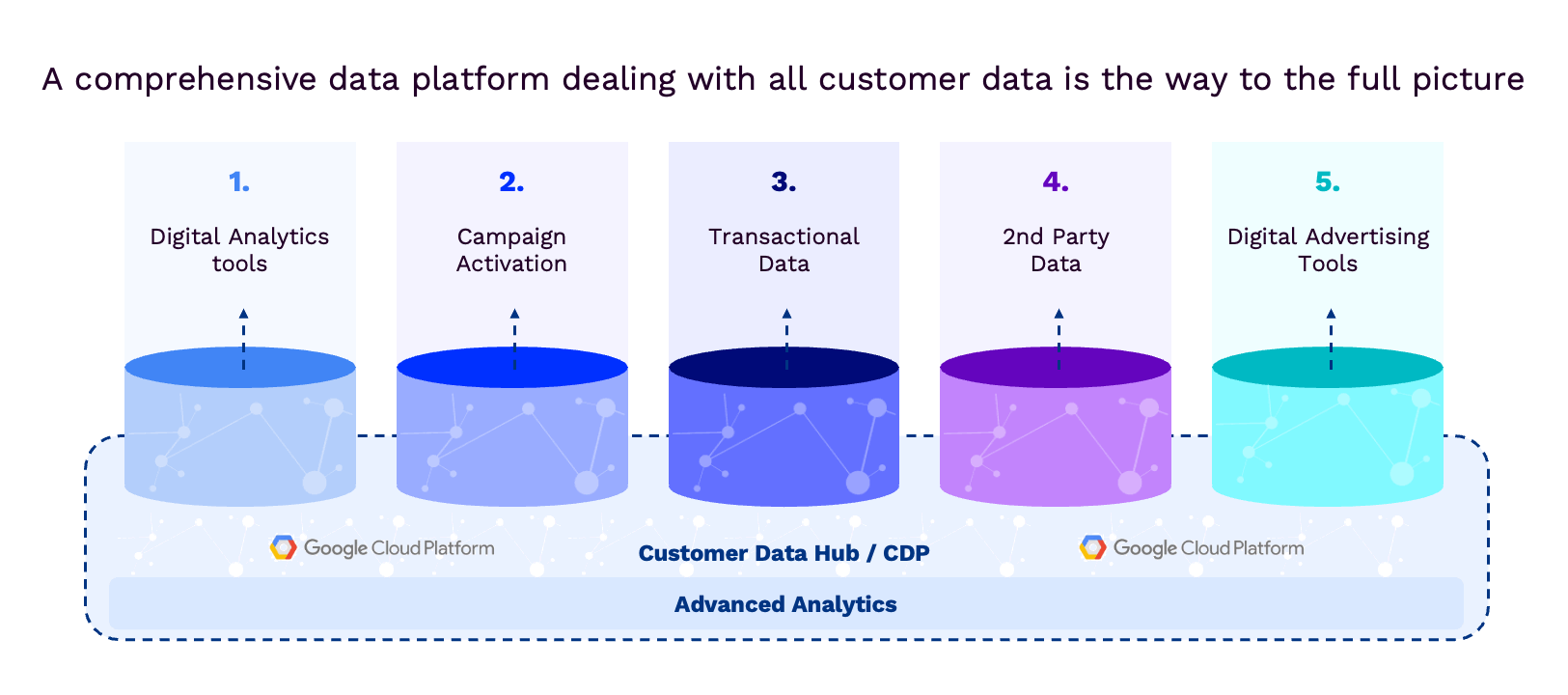Beyond CRM: why your business needs a Customer Data Hub
How unified is your understanding of your customer? If your current answer involves piecing together fragmented data from multiple systems, you’re not alone—but you are falling behind.
For years, CRMs have been the central hub for customer information. Yet, as enterprises evolve, it’s clear that traditional CRMs are no longer enough, not because they are ‘out-of-date’, but because they were not created to manage all customer data. The surge in data volume, variety, and velocity requires an infrastructure that can break down silos, deliver real-time insights, and activate data across all touchpoints. That’s where a Customer Data Hub (CDH) comes into play.
The challenges of the Data-Driven Era
Today's data-driven landscape presents several challenges for businesses:
- Data silos and fragmentation
Customer data is often scattered across disparate systems, hindering a complete customer view and impeding personalization efforts. - Real-time challenges and data quality
Traditional systems struggle to activate customer data in real-time, leading to missed opportunities. Furthermore, incomplete or inaccurate data undermines decision-making and marketing effectiveness. - Maximizing synergies with IT’s Cloud strategy
Enterprise and market leaders already adopt their Cloud preferred cloud provider and are investing large amounts on their journey to cloud to modernize their IT landscapes, but often they struggle to go beyond analysis and boost their activation capabilities to generate real value with their data-driven strategy.
Enter the Customer Data Hub (CDH): the cornerstone of Innovation

A Customer Data Hub (CDH) is a centralized repository that unifies customer data from all sources, enabling real-time processing audience management and activation. Unlike traditional CRMs or data lakes, a CDH provides a complete, actionable view of the customer enabling companies to leverage on cloud opportunities regarding scalability, data governance and AI.
Talking specifically about Google Cloud, its already known the impact of bring company’s data to BigQuery, enabling analytics, text-to-sql, self-BI. and leverage on Vertex AI to fully manage AI models, but to scale their data-driven omnichannel campaigns marketers need something else.
Key benefits of a CDH on Google Cloud
- Unified customer view
Break down data silos and achieve a single source of truth for all customer data. - Real-time personalization
Activate data in real-time to deliver personalized experiences across all touchpoints. - AI-powered insights
Leverage Google Cloud's AI and ML capabilities to gain deeper customer insights and predict future behavior. - Seamless integration
Integrate your CDH with Google Marketing Platform tools to optimize campaigns and create consistent cross-channel experiences.
Unlocking the future of personalization with AI and ML
Your CDH becomes even more powerful when combined with Google Cloud's AI and machine learning capabilities.
- Manage data from all users in real-time
Collect data from every relevant user not just from your own customers. In the cookieless era (yes, we are already on it) companies must be able to real-time collect data from all touchpoints both from customer, prospects and unknown (yet!) users and activate both first party and third party channels. - Deep Customer Understanding
Analyze customer behavior, preferences, and engagement patterns, crossing these data with product domains, operations and external data to correlate variables and deep understand customer behavior delivering better target audiences. - Predictive & Propensity Audience
Anticipate customer needs and proactively engage them with relevant offers and support (NBA, NBO). For example, predict churn risk and proactively reach out to at-risk customers with personalized retention offers. - Customer facing functions convergence
Create a common and unified platform that enables all customer facing functions (e.g.: go-to-market, performance marketing, digital, sales, CVM, customer service, etc) to work together, each one with its own goal but all of them with the same view of each prospect and customer to deliver coherent messages/content. - Omnichannel campaigns (really)
Be able to adopt omnichannel campaigns putting together owned channels, paid media, stores, customer care. By defining contact policies and cross channel governance use all channels to communicate efficiently with your customers. - Hyper-Personalization
Go beyond clustering and leverage on Generative AI to create your own data-driven Personas and drive personalized content creation strategies. Imagine tailoring website content, product recommendations, and email campaigns to each customer's unique needs.
Imagine being able to send a hyper-targeted ad within seconds of a customer browsing your website or predicting customer needs based on historical trends. That’s the future enabled by AI-powered CDHs.
The Datwave advantage
Datwave specializes in designing and implementing CDHs tailored to your unique goals on Google Cloud. We help you achieve a unified customer view, deliver real-time personalization, and fully leverage your Google Cloud investments.
Take charge of your Data Future
The data-driven age demands businesses operate with precision, foresight, and adaptability. A Customer Data Hub built on Google Cloud is no longer a luxury—it’s a necessity. It’s how you outpace competitors, exceed customer expectations, and build lasting loyalty.
Ready to unlock the full potential of your customer data? Learn how a CDH can transform your business.
Authors
Victor Bueno | MarTech Competence Director @BIP xTech